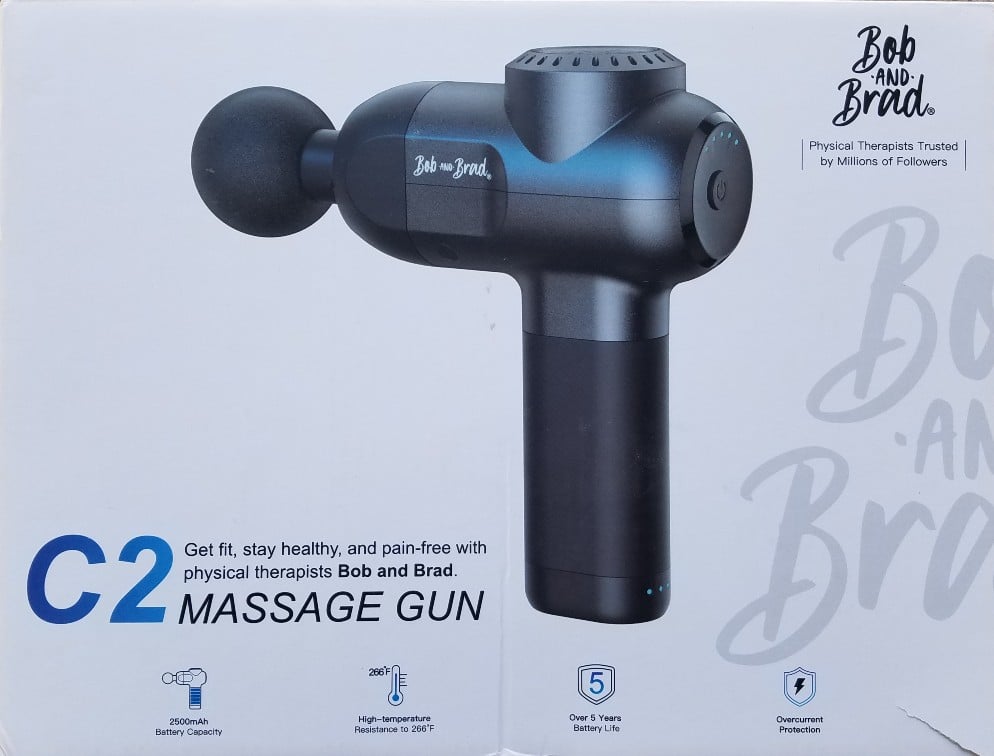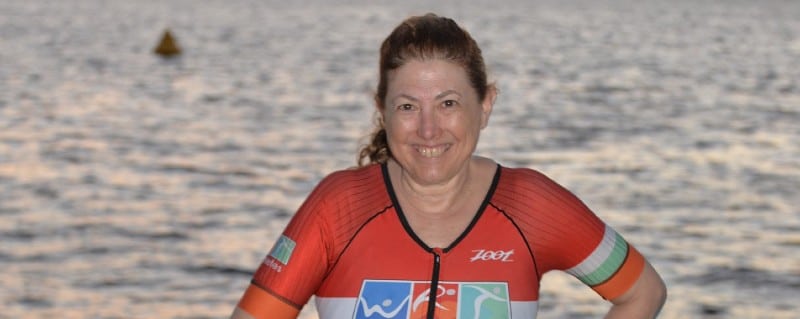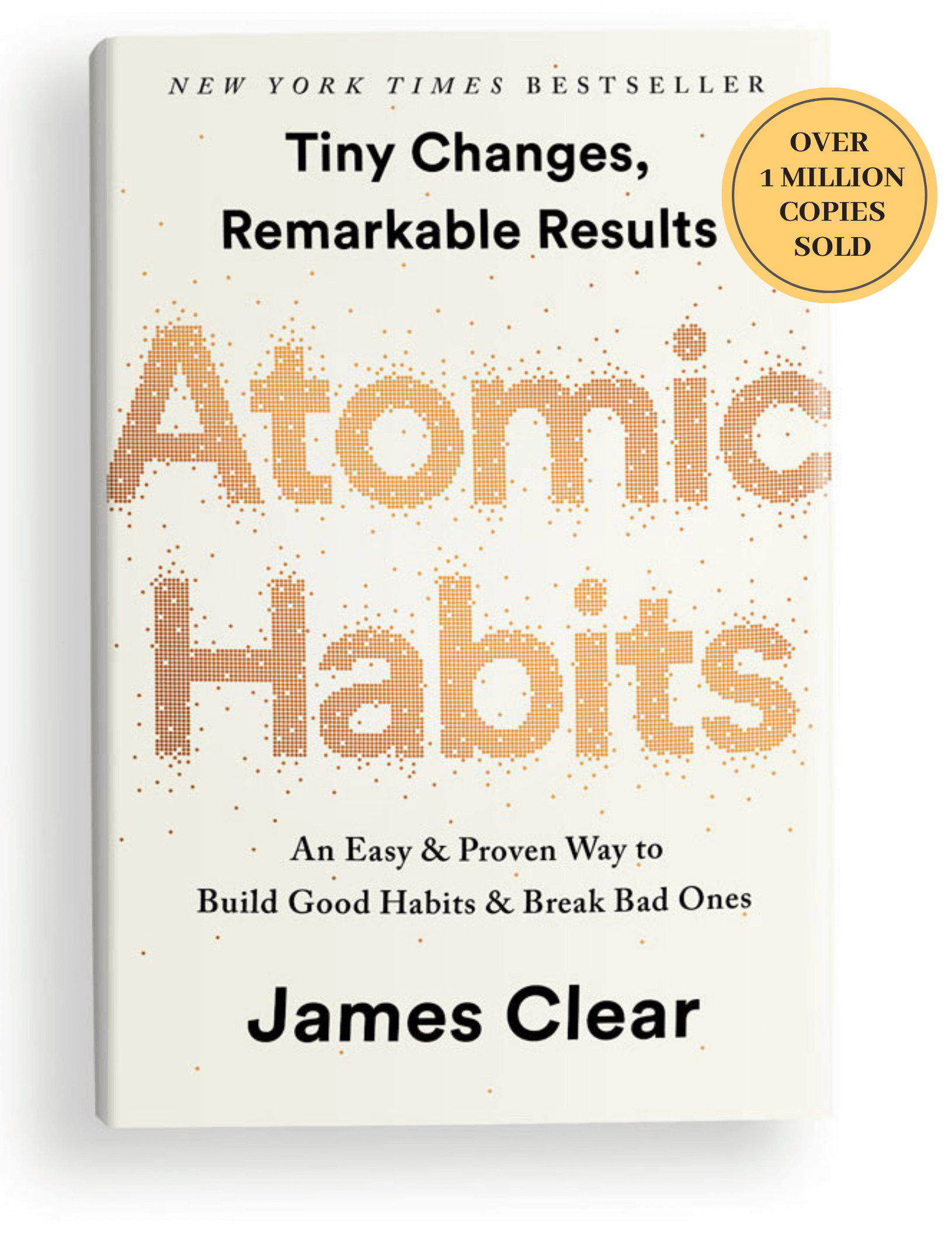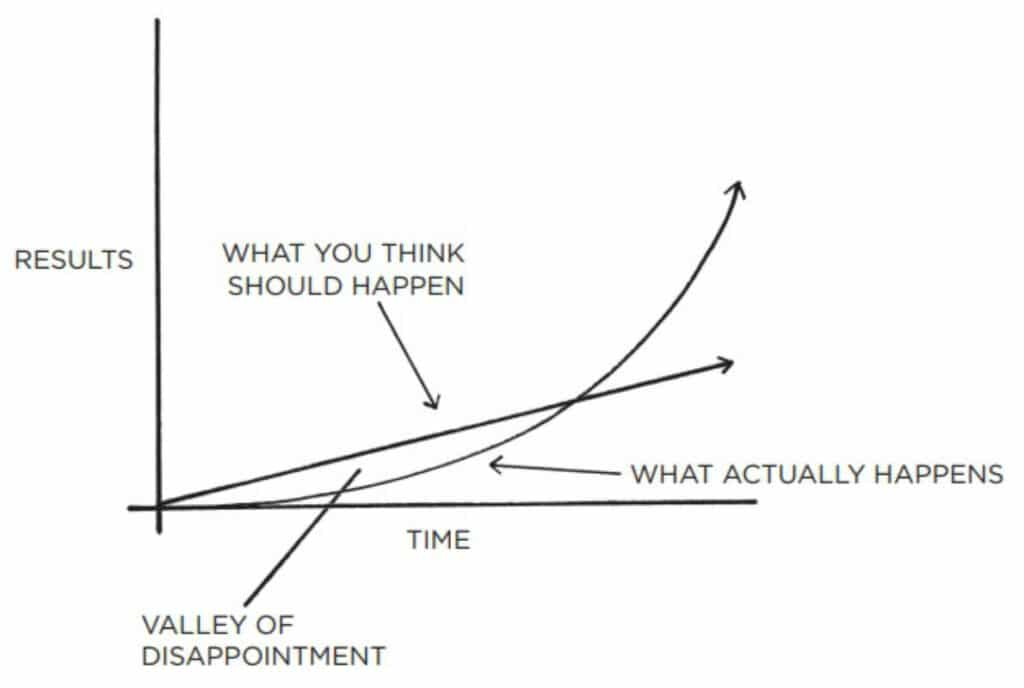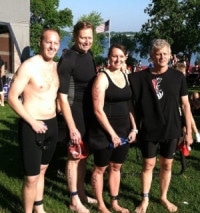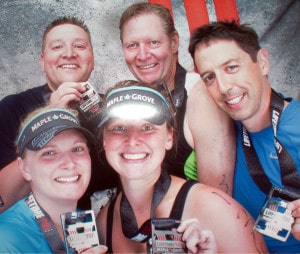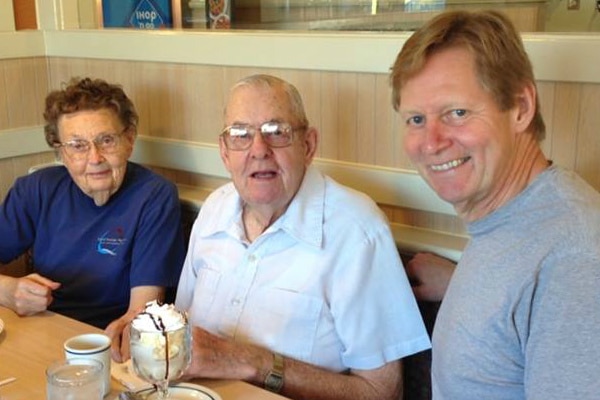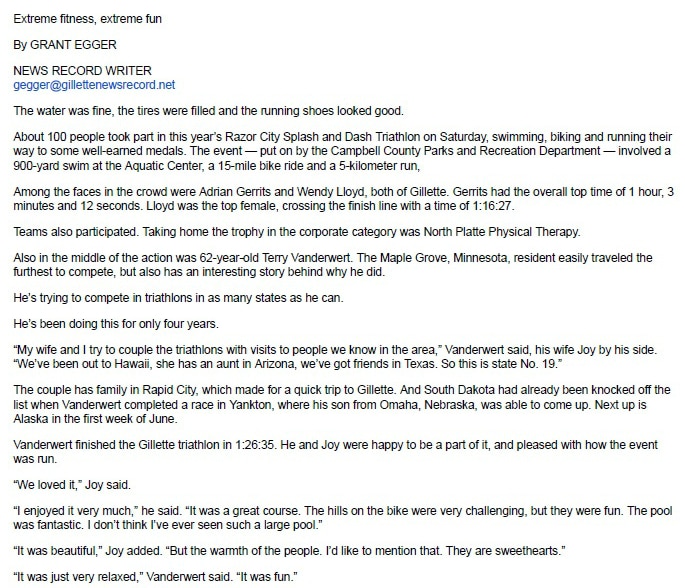Product Review: Bob and Brad C2 Massage Gun
While we were talking about how seniors can adapt general training plans, Coach Kurt Madden reached around and grabbed a massage gun. He told me that a massage gun can help prevent injury by loosening connective tissue.
In this post, I share Joy’s and my experience with the C2 Massage Gun sent to me by Bob and Brad. I have also included an unboxing video to show the C2 and what you get with it.
Introduction
As older athletes, we know that recovery can be slower than when we were younger. Yet we want to train consistently. Tools and techniques that help us prevent injury and recover faster are especially important as we age.
Even though the days of ‘No Pain, No Gain’ are behind us, we may still occasionally experience pain, stiffness, or sore muscles after a workout. Massage guns have become a popular and effective tool for relieving pain and tight muscles. However, as I will show in this post, massage guns have other uses for the multi-sport endurance athlete.
What Do You Get With the C2 Massage Gun?
Bob and Brad is a brand built around two “physical therapists trusted by millions of followers.”
The first thing I noticed when I learned about Bob and Brad was the many free resources on their website.
We had purchased another massage gun a couple of months earlier; there were no instructions with it. More recently, our daughter purchased a massage gun. It came with a miniature instruction manual, but little information on how to use the gun.
It impressed me to see the dozens of free programs on the Bob and Brad website. These include instructions for treating various types of pain, including hip, back, knee, and neck pain. One program is focused on treating sciatica.
The Bob and Brad website includes instruction on the Meeks Method for treating osteoporosis. I also found free stretch and strength training videos. And, I haven’t gotten through the entire site.
Unboxing Video
The YouTube video shows the unboxing of the C2 Massage Gun that Bob and Brad sent me to use. You can also click on the picture below to see what’s inside the box.
Specifications
The table below shows the main specifications for the C2 Massage Gun.
| Specification | Why It’s Important | Value for Bob and Brad C2 Massage Gun |
| Speed | Along with amplitude, speed determines the power of the massage gun. Lower speed is for a lighter duty massage, while higher speed is for a faster or more aggressive one. | 2000 – 3200 rpm over 5 speeds |
| Amplitude | Determines the depth of the penetration of the head. The higher this value, the deeper the massaging tool can press into the muscle. | 8 mm |
| Stall Force | This measures the amount of force that can be applied before the gun stops vibrating. Stalling is a way the unit protects itself. | 35 pounds |
| Weight | The weight of the gun affects how easy it is to hold during use. | 1.5 pounds |
| Noise level | The sound produced by the gun during operation determines if you can use it while talking or listening to others or while listening to TV or other audio or video recordings. The value for this gun is within the normal range of human conversation. | 55 dB |
With these values of amplitude and stall force, the C2 is a light to medium duty gun. Yet, in our experience, it has plenty of power to work tense muscles.
What Are Uses For The C2 Massage Gun
The User Manual included with the C2 Massage Gun shows several of its uses. These range from activating muscles before a workout to recovering after exercise and managing chronic pain from injury.
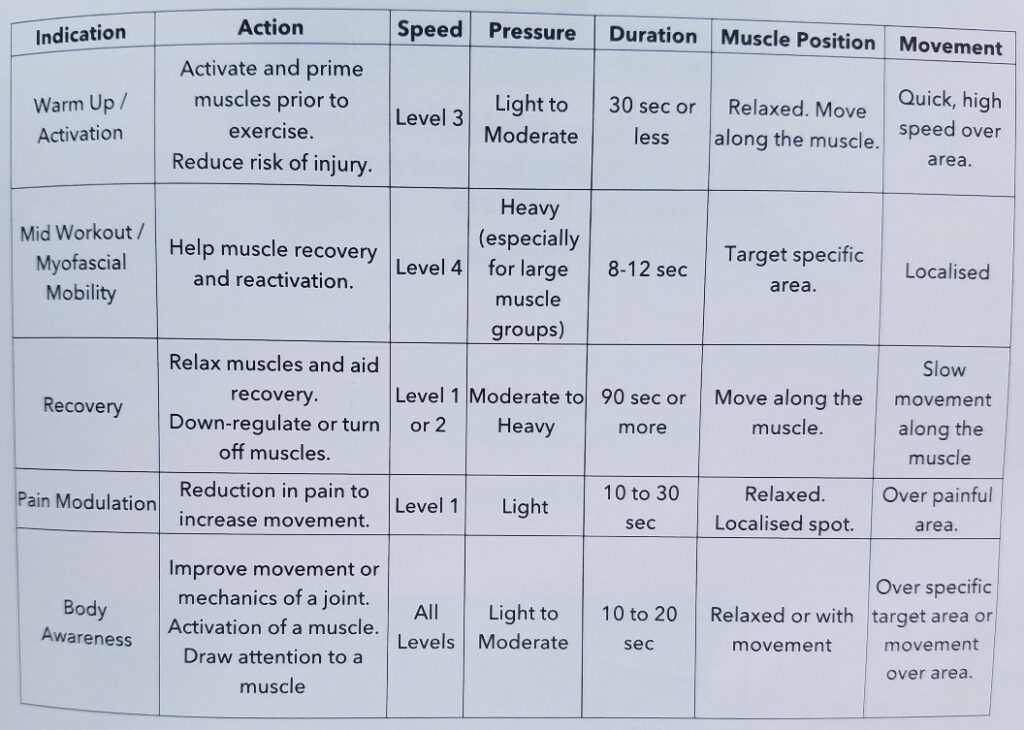
Our Experience
In addition to looking at the company behind the product and its specifications, we put the C2 Massage Gun to use on some issues we were having. Following is our initial experience with the product.
Treating Shoulder Joint Pain
My wife, Joy, had been receiving physical therapy (PT) for a sore shoulder. Since we were traveling, she had put the PT on hold.
Upon receiving the C2 massage gun, Joy used it with the round, ball head in the muscles around and underneath her shoulder.
By moving the gun around her arm, she found a tight muscle near her armpit. This muscle had not been addressed in PT.
After lightly massaging this area for a couple of minutes with the gun, her pain was reduced. The pain from the tight muscle was still gone after several days.
Treating a Tingling Shoulder Muscle with Neck Pain
I used the gun to massage the area of my neck that was sore and shoulder that would occasionally become ‘tingly’. The neck pain disappeared after the first two applications. However, my shoulder would still ‘tingle’ from time to time
I found more relief for the shoulder after spending time on the Bob and Brad website and doing a neck stretch they recommend.
Finally, I convinced Joy to massage the stiff muscle area in this shoulder because I was having difficulty applying the needed pressure. She started massaging it using the flat head at speed setting 3, After a while, she replaced the flat head with the bullet (more pointed) head. This allowed her to apply more pressure on the small area that was most tight.
After several applications, the tingling ceased.
Activating Muscles Before a Workout
Doing some hip and core strengthening exercises before going for a run prevents pain during the initial part of a run. For this review, I decided to substitute a session using the C2 Massage Gun for these exercises.
I followed the protocol for ‘Warm Up/Activation’ shown in the picture above. Then, I completed the hip and leg up warmup routine described in this Bob and Brad post.
Following this with a short run convinced me that the warm-up was effective, similar to other pre-run hip, quad, and hamstring stretches I have used,
Our Assessment
While considered light to medium duty, the C2 Massage Gun has plenty of power to work our tight muscles. With the bullet head, we are able to provide more pressure than I have found necessary.
If all Bob and Brad were trying to do was sell products, it is unlikely they would provide so many free resources that require no product. I appreciate their commitment to pain relief.
I am confident in their products because I trust these guys.
Want to Order the C2 Massage Gun?
If you want to buy the Bob and Brad C2 Massage Gun on Amazon, please use this link: https://amzn.to/42q9yaG.
Use Discount Code: BOBBRADG10 for 10% OFF the purchase price,
If you purchase the C2 using this link, I earn a small commission which helps to cover the cost of maintaining this website.
How Do You Use a Massage Gun?
For what do you mostly use a massage gun?
What massage gun do you use? How did you choose it? Was there a particular specification you looked for?
Comments: Please note that I review all comments before they are posted. You will be notified by email when your comment is approved. Even if you do not submit a comment, you may subscribe to be notified when a comment is published.

